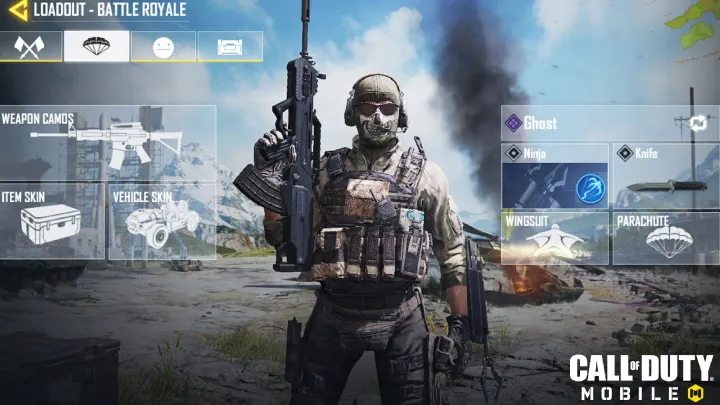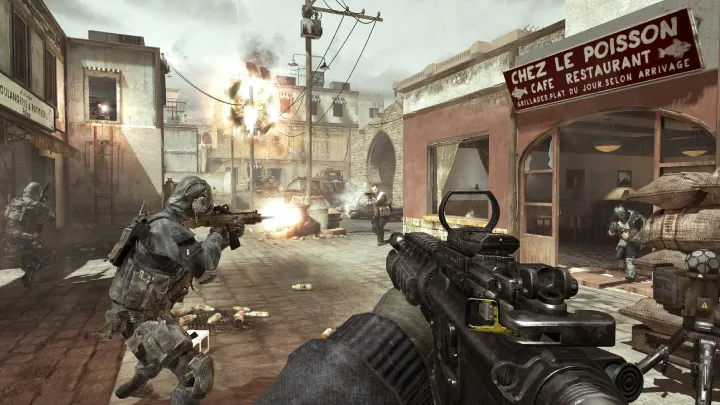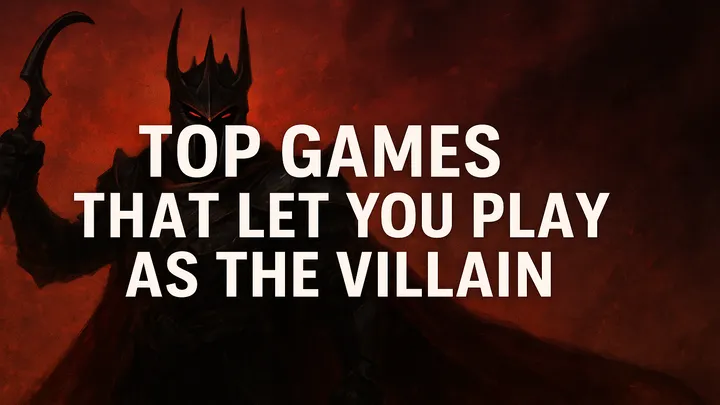Call of Duty has become one of the most iconic first‑person shooter franchises over the past two decades. Its fast‑paced combat, diverse settings, competitive multiplayer, and cinematic campaign missions have attracted millions of players worldwide. Whether you're new to FPS games or looking to improve your performance in the latest title, becoming truly skilled in Call of Duty requires more than quick reflexes. It demands strategy, knowledge of game mechanics, map awareness, resource management, and adaptability.
This comprehensive guide breaks down the journey from basic controls to advanced tactics in multiplayer and campaign modes. We’ll cover everything from customizing your loadout, mastering aim and movement, learning map layouts, using game modes effectively, communicating with teammates, maximizing progression, managing resources, understanding killstreaks and perks, playing in ranked or competitive environments, to maintaining performance and mindset. By following these steps, you’ll build a solid foundation and continually grow as a Call of Duty player.
1. Getting Started: Understanding Controls and Game Mechanics
The first step is getting comfortable with the fundamental controls and mechanics that define Call of Duty gameplay. Every installment may have slight variations, but the core remains consistent.
Learn the control scheme of your platform—PC, console, or mobile. On consoles, master the thumbstick for aiming and movement, triggers for firing and aiming down sights, and buttons for reloading, jumping, crouching, and melee attacks. On PC, become intimately familiar with keybinds such as WASD for movement, Ctrl/Space for crouch/jump, R for reload, Shift for sprint, and mouse for precise aiming.
Understand game mechanics like aim‑down‑sights (ADS), hip fire, weapon recoil and bloom, sprinting and slide mechanics, tactical equipment (flashbangs, stun grenades, frag grenades), lethal equipment, and armor or health regeneration systems. Practicing these in basic modes or shooting ranges helps build muscle memory and prepares you for real matches.
Once you’re comfortable with movement and shooting, gradually introduce tactical elements like switching weapons quickly, using equipment effectively, and toggling between ADS and hip fire based on context. These basics form the backbone of solid gameplay.
2. Customizing Your Loadout: Weapons, Attachments, Perks, and Killstreaks
The next vital step is configuring your loadout to suit your playstyle and the map or mode you’re playing.

Start with weapon selection: choose between assault rifles, SMGs, LMGs, sniper rifles, shotguns, or hybrid weapons. For beginners, mid‑range assault rifles often offer balance and ease of use. As you grow, explore other classes and understand their roles SMGs for close‑quarters, LMGs for suppression, and sniper rifles for long‑range precision.
Attachments dramatically alter gun performance. Use optics for better sighting, compensate for recoil with grips and stocks, and adjust handling with barrels and magazines. Perks offer strategic enhancements like faster sprint‑out speed, immunity to enemy tactical equipment, or better awareness of enemy ghosting. Select perks that complement your weapon choice and game goals.
Killstreaks or Scorestreaks reward consecutive kills with powerful tools like UAV, precision airstrike, or attack dogs. Choose streaks you can realistically earn, and balance high‑risk offensive streaks with more supportive ones based on your strengths. Learn how to chain perks and streaks for efficient loadouts.
3. Mastering Aim, Recoil Compensation, and Movement Techniques
Precision aiming and agile movement differentiate a good player from a great one.
Practice tracking and flick‑aim by playing in modes like Gunfight or in private matches with bots. On PC, tweak mouse sensitivity and aim acceleration to find a balance between quick turns and precise targeting. On consoles, set horizontal and vertical sensitivity to a level that allows both awareness and accuracy.
Recoil patterns vary by weapon study them in practice ranges or during gameplay. Learn to pull your aim in the opposite direction of the recoil while fighting to keep bullets on target. Combine this with burst firing for long‑range engagements to maintain accuracy.
Movement techniques like slide‑canceling, bunny‑hopping, drop‑shotting, and tactical sprinting can catch opponents off guard. Use corners, high ground, and terrain to your advantage. Learning to become harder to hit while maintaining offensive pressure is key.
4. Learning Maps and Positioning: Charting the Battlefield
Map knowledge is one of the most undervalued skills in Call of Duty.
Spend time studying each map learn high‑traffic zones, sightlines, choke points, and power positions. Experiment in custom games or limited modes to observe where enemies typically spawn, where objective zones cluster, and where explosive or tactical grenades are most effective.

Use elevated positions, windows, and flank routes smartly. Avoid staying in exposed areas too long. In objective modes like Domination or Hardpoint, position yourself to contest objectives while maintaining cover and sightlines. In search‑and‑destroy or kill‑confirm, adapt positioning to balance aggression and stealth.
When you know the map well, you’ll predict enemy movement, take advantageous positions, and coordinate team pushes more effectively.
5. Understanding Game Modes and Adapting Strategies
Call of Duty delivers a mix of game modes each with its own ideal strategies.
Team Deathmatch emphasizes constant fighting great for practicing aim and reflexes. Domination and Control focus on holding zones balance aggression with defense. Search and Destroy demands patience and planning since death is final until round reset. Kill Confirm rewards map control, efficient kills, and collecting dog tags before reset.
Tailor your loadout and playstyle accordingly. For TDM, equip faster run‑and‑gun tactics. In Domination, use suppressive weapons and coordinate capturing points. For Search, bring silencers or stealth perks, and focus on one lane with your team. In Kill Confirm, remain mobile, clear lanes, and support allies gathering tags.
Adapting to each mode improves your versatility and game IQ, making you a more valuable teammate.
6. Communicating and Team Coordination
Even in casual matches, effective communication can turn the tides.
Use voice chat or quick messages to call out enemy locations, coordinate pushes, and share tactical intel like streak availability or objectives needing defense. Simple callouts like “two enemies near yellow building” or “watch mid‑hall” help teammates make smarter moves.
When playing with friends or a premade team, assign roles: entry fragger, anchor, support, and streak denial. Rotate accordingly and maintain awareness of team positioning to avoid overlapping or neglected zones.
Call of Duty team-based play thrives on synchronized movement and shared awareness of map flow, enemy positioning, and objective status.
7. Progression, Challenges, and Weapon Mastery
Call of Duty titles reward dedication through weapon challenges, rituals, and mastery systems.
Complete camo challenges, attachments unlock, deadly operator skins, or progression paths to master weapons. This not only unlocks cool cosmetic rewards but also teaches recoil patterns, firing range, and map utility for each weapon.
Track your performance stats kill/death ratio, win/loss ratio, score per minute and use them to refine your strategy. If you excel at close‑quarters but struggle at range, invest time in tactics for long‑range engagement, or vice versa.
Weapon mastery fosters fluid gameplay and adaptability across multiple weapons and styles. The more challenges you complete, the more comfortable you become with your loadouts under varying circumstances.
8. Resource Management: Ammo, Equipment, and UAV Guardianship
Smart resource management keeps you in the fight longer.
Always be aware of your ammo count. Avoid running dry at crucial moments. Use resupply points or pick up weapons from the environment or fallen enemies. Tactical and lethal equipment are powerful—use them judiciously for clearing rooms, denying flanks, or interrupting enemy streaks.
Actively play to deny enemy Scorestreaks by shooting them down or spending time near care packages to neutralize them. Securing level advantage through streak denial is as impactful as earning streaks yourself.
Being efficient with ammo, equipment, and control of perks or streaks extends your influence on the battlefield beyond individual kills.
9. Playing Ranked or Competitive Play
Stepping into ranked or competitive Call of Duty demands precision, awareness, and composure.

Watch pros and high-level streamers to observe positioning, team strategies, spawn control, class setups, and communication style. Learn timing for rotations, how to bait pushes, and how to play clutch rounds.
Avoid unnecessary aggression. Communication and methodical clearing of angles gives you a significant edge over frantic solo play. Rotate after kills, reset positioning regularly to avoid being countered, and prioritize smart play over flashy plays.
Working with teammates is critical. Knowing when to trade kills, rotate for an objective, or hold angles ensures better round control and eventual victory.
10. Maintaining Performance: Settings, Mindset, and Improvement Loop
Consistent performance requires optimizing settings and mental approach.
Ensure graphics settings such as frame rate, field of view (FOV), and sensitivity are adjusted to balance visual clarity and smooth performance. Lower input lag and higher FPS directly improve reaction time.
Keep your mindset positive. Treat every death as a learning opportunity. Analyze replays or clips to spot errors poor positioning, bad aim, or misused equipment and correct them going forward.
Set small goals like improving accuracy, decreasing time to kill, or mastering a new weapon class. Practice daily in training modes or with warmup routines. Over time, incremental gains build up to substantial improvement.
Conclusion
Mastering Call of Duty is a journey rooted in understanding mechanics, customizing loadouts, refining aim and movement, learning maps and modes, communicating effectively, managing resources, completing challenges, and maintaining a growth mindset. Each step of this guide builds on the last, leading from novice confusion to confident, skilled gameplay—whether your focus is casual fun or competitive glory.
Keep playing, keep analyzing, and keep pushing to become a sharper, smarter, and more adaptable player in the world of Call of Duty.
Summary :
Complete Call of Duty how‑to guide covering controls, loadouts, aim, maps, modes, communication, resource management, progression, competitive play, and steady improvement.
















